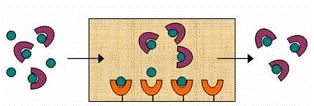Department of Chemistry
Document Type
Article
Date of this Version
9-2013
Citation
Published in Clinica Chimica Acta 425 (October 21, 2013), pp. 64–76; doi: 10.1016/j.cca.2013.07.013
Abstract
Glycation involves the non-enzymatic addition of reducing sugars and/or their reactive degradation products to amine groups on proteins. This process is promoted by the presence of elevated blood glucose concentrations in diabetes and occurs with various proteins that include human serum albumin (HSA). This review examines work that has been conducted in the study and analysis of glycated HSA. The general structure and properties of HSA are discussed, along with the reactions that can lead to modification of this protein during glycation. The use of glycated HSA as a short-to-intermediate term marker for glycemic control in diabetes is examined, and approaches that have been utilized for measuring glycated HSA are summarized. Structural studies of glycated HSA are reviewed, as acquired for both in vivo and in vitro glycated HSA, along with data that have been obtained on the rate and thermodynamics of HSA glycation. In addition, this review considers various studies that have investigated the effects of glycation on the binding of HSA with drugs, fatty acids and other solutes and the potential clinical significance of these effects.



Comments
Copyright © 2013 Elsevier B.V. Used by permission.